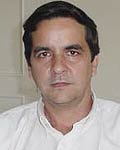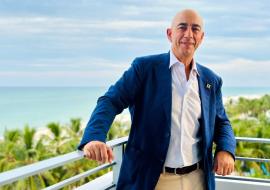Carlos Menendez. Deputy Director-General of Aguas de La Habana


Q- What are the joint venture´s partners?
A- On the Cuban side, the Institute of Hydraulic Resources, and on the Spanish side, it´s Aguas de Barcelona and a Spanish entrepreneur who holds five percent of the firm. Foreign investment on the island doesn´t imply ownership transfers, so ALH´s infrastructure remains in the public domain and it was authorized to be used for the sake of a better service.
Q- For how long will the agreement remain in force?
A- It was signed for a 25-year stretch, though it can be renewed.
Q- How does the company work out billing?
A- In order to come up with a system that allows the financing of this major investment in both engineering and works, ALH introduced a double billing system for two thirds of Havana´s consumers, which is its current operational zone. While the company charges Cuban consumers one Cuban peso for every cubic meter of water, it also charges one dollar on foreigners -mostly tourist compounds. Anyway, that´s a much cheaper charge, approximately 33 percent cheaper, than the money collected through water supply services in the Barcelona metro area, for instance.
Q- How do you assess these first four years for ALH?
A- We´re going smoothly, though we´ve got an ambitious hydro-energetic plan that kicked off back in 2002. Suffice it to say, for instance, that last year alone the company restored nearly 60 miles of pipelines in the city of Havana. That figure has to be added to the 400 miles of pipelines that we had restored in the past. We must also say that Havana´s water supply grid comprises a total of 2,500 miles of pipelines. The situation in the nation´s capital of 2.2 million inhabitants was extremely serious until the year 2000. There was no water supply at all in some areas and the service was on and off in other neighborhoods, and that was mostly caused by severe shortcomings and deficiencies in the water supply system.
Q- What is, in essence, ALH´s primary task?
A- The company is in charge of managing water supply services, aqueducts, sewerage and drainage in an huge area of the island nation´s capital, plus the municipalities of La Lisa, Playa, Marianao, Old Havana, Downtown Havana, Cerro, 10 de Octubre and Plaza. As to the works this joint venture has conducted, we can mention the installation of 250 miles of pipelines of different gauges and the restoration of the 19th-century Albear Aqueduct. This old-timed canal of little more than 6 miles long supplies water to roughly 10 to 12 percent of Havana. Its restoration slashed approximately 40 percent of all trips made by tank trucks that used to take water to Old Havana, the oldest part of town.
Q- How´s the quality of the water?
A- The water we supply comes from underground deposits. Its quality is pretty good and we count on an abundant number of sources. It only needs to be chlorinated. The main problem lies in the city´s rundown distribution mesh and there is where we´re focusing most of the investment on. We need to keep the supply system up and running by replacing creaky pipelines. I must say that last year we surpassed Cuba´s water bacteriological standards (around 95 percent of all samples) and our goal is to nudge that indicator up a tad more.
Q- There are countless hotels, restaurants and recreational centers in the old part of town. How is ALH coping with that situation in this area?
A- By means of a heavy investment policy aimed at improving water supply there. We can say Old Havana is better off now than it used to be a few years ago.
Q- How many miles of pipelines are yet to be repaired?
A- The whole infrastructure embraces some 1,118 miles of pipelines and around 930 miles of them must be restored. We´ve barely fixed 10 percent of that total, that is, some 95 miles. However, the investment process has been going well and we´re homing in on the most difficult places around Havana.














